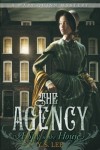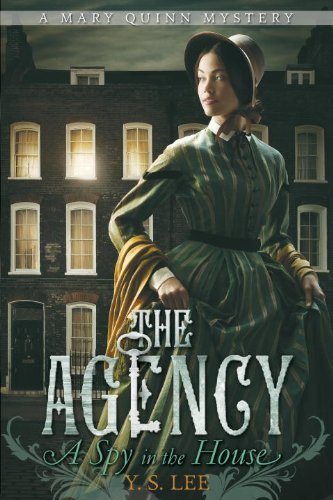 The Plot
The Plot
The orphaned Mary Lang’s nascent crime spree was halted abruptly when she was caught in the act. Sentenced to hang for her behavior, the twelve year old was instead spirited away to Miss Scrimshaw’s Academy for Girls and educated to the point where she could make an independent living for herself by non-illegal means. Now aged seventeen and going by the name of Mary Quinn, she finds herself asked to join a group associated with the school: The Agency. An intelligence gathering operation, The Agency might be able to provide Mary with the sort of purposeful and stimulating life she craves. She soon finds herself sent out on her very first assignment, to report upon the suspected criminal activity of Henry Thorold while posing as the paid companion of his daughter Angelica.
My Thoughts
We’re first introduced to Mary Lang at the tender age of twelve, as she stands in the dock to hear her sentence of death by hanging. Mary, orphaned after the death of her mother and the disappearance (and supposed death) of her father, has been scraping by Oliver Twist-style by means of petty thievery. She was caught after graduating to housebreaking and her short career – and life – seems to be at an end. But that would be a very short book indeed, so instead Mary finds herself abducted from the prison yard and given the opportunity to attend Miss Scrimshaw’s Academy for Girls.
The Academy is a place for girls of all stripes and backgrounds to gain the education with which to make their own way in the world. Not that there are many ways to make it as a woman in Victorian society. The story leaps past Mary’s school years in order to focus on a potential answer to this dilemma: how can a clever and educated woman with no background or influence make a real contribution to the world? In Mary’s case, opportunity presents itself in the form of an invitation to join “The Agency”, a sort of shadow companion institution to the school. The Agency, an intelligence gathering organization staffed by women, has managed to find itself a niche market by where it provides otherwise unobtainable information to the likes of Scotland Yard. Mary is eager to prove herself a top prospect as an agent, and after a brief period of training, she is sent out on her very first assignment.
After swiftly setting up the scene, it’s here in this middle section where the book bogs down a bit. Mary is hired by the Thorold family as the paid companion to their eighteen year old daughter Angelica. Mary’s been given little direction in her real assignment, which is to observe and report upon the household, in particular upon Henry Thorold (Angelica’s father), who is suspected of being a smuggler. Another agent, unseen and unnamed, has the primary responsibility for this case, and Mary’s task is just to provide supplemental information and evidence. Mary, barely trained and very inexperienced, flounders around uncertainly, unable to figure out what she’s supposed to do next. And while this is extremely realistic, this was definitely the least interesting portion of the book and at times I found myself really pushing to keep my attention focused.
Fortunately, the pace picks up again once Mary grows impatient do be doing something – anything! – and begins to make more active efforts to investigate. Though the sequence of events which leads to the climax and ultimate conclusion strain credulity a little, it’s still an enjoyable ride. Mary stays true to her character throughout and never ends up shunted aside even in the final act.
Though Mary’s assignment is resolved by the end of the book, there are quite a few plot threads left dangling unanswered. Not to mention a villain I’ll be very disappointed with if no further activity from them is seen. In other words, it’s clearly not the end of the story, just a good place to pause.
In Short
Y.S. Lee’s A Spy in the House manages to create a realistic and realistically flawed heroine in the character of Mary Quinn. The book itself isn’t perfect – the middle chapters were less engaging than the beginning and the end – but the pace was good and on top of the plot it managed to say a lot about the condition of women in Victorian England without going out of its way to be preachy (or teachy). I’ll definitely be picking up the rest of this series.


Leaving this comment on your review because yours was posted first.
We totally cut off her head!!
Ha ha. We’re in total disagreement. About Mary and about the book as a whole. We need a tiebreaker!
I think you’re going to lose. ’cause usually Michelle and I have very similar opinions, especially on books like this.
I can’t say I didn’t notice all of the problems you saw, but I was able to get past them. Because I generally like this sort of book more than you? That could be it.
I think my review has indeed broken the tie. :)